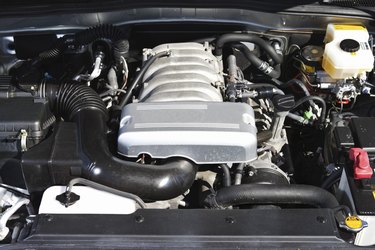
Since its introduction in 1976 the Honda Accord has earned a reputation as a reliable vehicle. Regardless, engine problems can occur, especially in older models or vehicles subject to improper maintenance. One such problem is a leaky or blown head gasket, and it is important to know the signs and symptoms of this problem in order to avoid a serious and potentially expensive problem to repair.
The head gasket forms a seal between the engine block and the engine head cover. It must keep engine exhaust gasses, engine oil, and cooling fluid separated in their proper passages. The symptoms of a leaky or blown head gasket are usually the result of these fluids mixing.
Fluid Leaking From Engine
The appearance of oil or coolant on the outside of the engine at the interface between the engine block and the head cover can be a sign of a leaky head gasket. If fluid is visible in this area, wipe it off and run the engine for a while to see if the fluid reappears in order to confirm that it is a leak and not the result of a spill.
Exhaust Pipe Smoke
Blue smoke coming from the exhaust pipe is a sign that oil is leaking into the cylinders. Thick white smoke, possibly accompanied by a sickly sweet odor, can be a sign that coolant is leaking into the cylinders. Both can potentially be caused by a leaking head gasket.
Foam or Sludge in Oil
Foam or sludge in the engine oil can be a sign that coolant is leaking into the oil. Check the appearance of the oil on the dipstick. If it looks more like butterscotch pudding than engine oil then the oil may be contaminated with coolant. Look into the oil filler cap and check for signs of foam or sludge.
Dirty Engine Coolant
Oil leaking into the engine coolant will impart a dark, oily appearance to the coolant and will cause an oily scum on coolant surfaces. Open the coolant reservoir cap (the radiator cap on older models) and check the appearance and condition of the coolant.
Bubbles in the Coolant
Engine exhaust gasses leaking into the coolant passages will result in bubbles and foaming in the coolant fluid. With the engine cold, open the coolant reservoir cap (the radiator cap on older models). Start the engine and allow it to warm up to the point where the thermostat opens and the coolant begins to circulate. Have someone rev the engine a few times and look for bubbles in the circulating coolant.
Sluggish Engine Performance
A blown head gasket can result in fouled spark plugs and reduced engine compression, both of which can cause rough engine operation and sluggish performance.